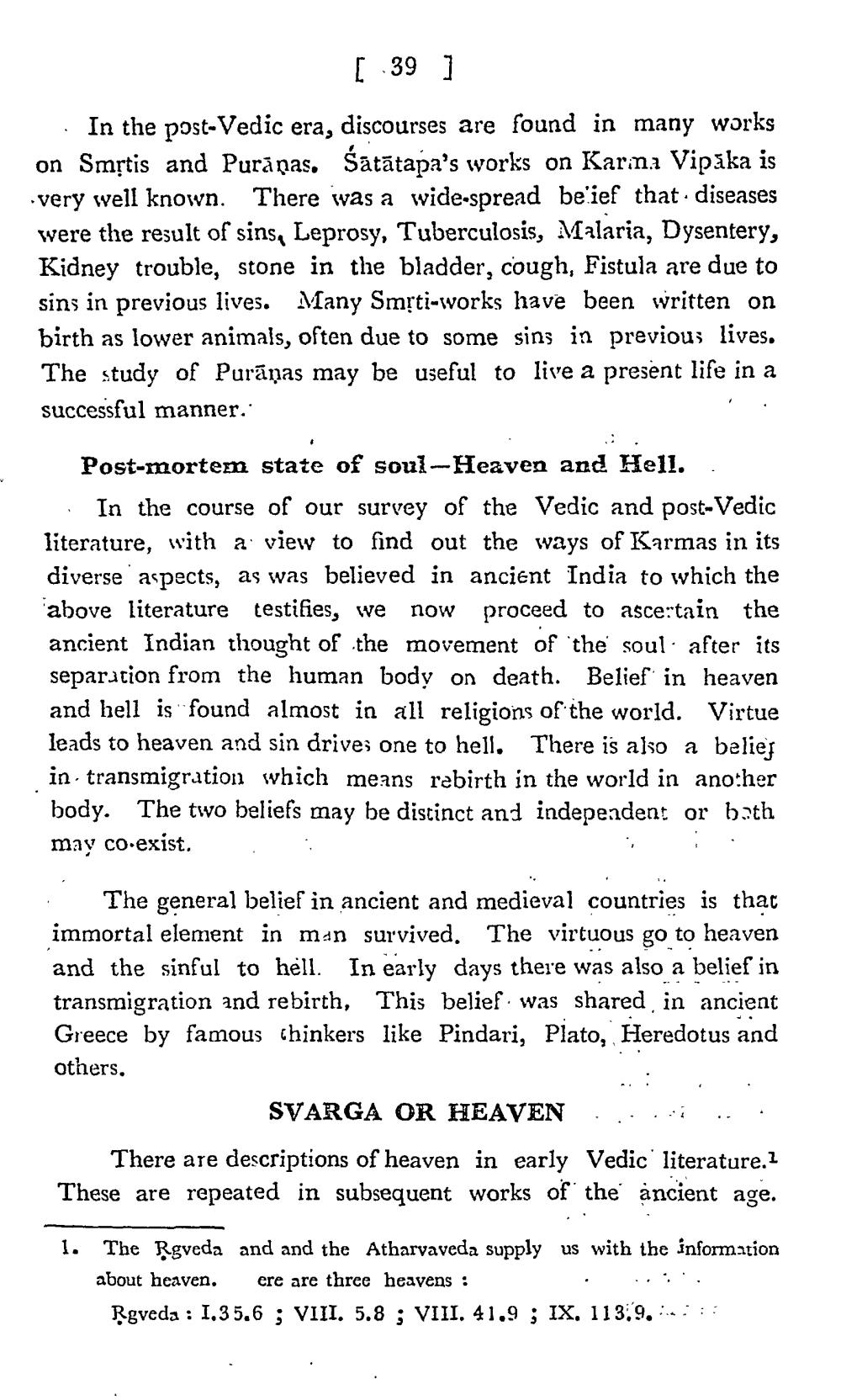________________
[
39
]
· In the post-Vedic era, discourses are found in many works on Smstis and Purāņas. Šātātapa's works on Karina Vipaka is very well known. There was a wide.spread be ief that diseases were the result of sins, Leprosy, Tuberculosis, Malaria, Dysentery, Kidney trouble, stone in the bladder, cough, Fistula are due to sins in previous lives. Many Smsti-works have been written on birth as lower animals, often due to some sins in previous lives. The study of Purāņas may be useful to live a present life in a successful manner.'
Post-mortem state of soul-Heaven and Hell. · In the course of our survey of the Vedic and post-Vedic literature, with a view to find out the ways of Karmas in its diverse aspects, as was believed in ancient India to which the above literature testifies, we now proceed to ascertain the ancient Indian thought of the movement of the soul. after its separation from the human body on death. Belief in heaven and hell is found almost in all religions of the world. Virtue leads to heaven and sin drives one to hell. There is also a beliej in transmigration which means rebirth in the world in ano:her body. The two beliefs may be distinct and independent or both may co-exist.
The general belief in ancient and medieval countries is thac immortal element in man survived. The virtuous go to heaven and the sinful to hell. In early days there was also a belief in transmigration and rebirth, This belief was shared in ancient Greece by famous chinkers like Pindari, Plato, Heredotus and others.
SVARGA OR HEAVEN ........ There are descriptions of heaven in early Vedic literature, 2 These are repeated in subsequent works of the ancient age. 1. The Rgveda and and the Atharvaveda supply us with the information
about heaven. ere are three heavens : Rgveda : 1.35.6 ; VIII. 5.8 ; VIII. 41,9 ; IX. 113.9. -.::




